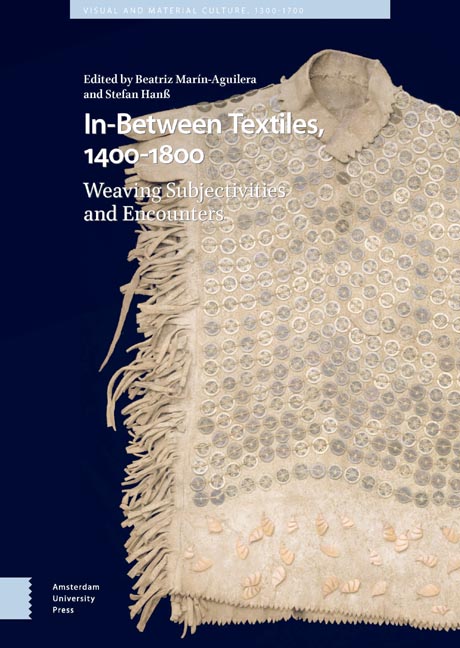Book contents
- Frontmatter
- Dedication
- Miscellaneous Frontmatter
- Table of Contents
- List of Illustrations
- Acknowledgements
- 1 Subjectivities In-Between Early Modern Global Textiles
- Part I Unhomeliness, Mimicry, and Mockery
- Part II The Material Enunciation of Difference
- Part III Identity Effects In-Between the Local and the Global
- Part IV Material Translation and Cultural Appropriation
- Archives, Libraries, and Museums (Abbreviations)
- Select Bibliography
- Index
8 - “Rags of Popery”: Dressing and Addressing the Material Culture of Disrupted Faith in Early Modern England
Published online by Cambridge University Press: 14 October 2023
- Frontmatter
- Dedication
- Miscellaneous Frontmatter
- Table of Contents
- List of Illustrations
- Acknowledgements
- 1 Subjectivities In-Between Early Modern Global Textiles
- Part I Unhomeliness, Mimicry, and Mockery
- Part II The Material Enunciation of Difference
- Part III Identity Effects In-Between the Local and the Global
- Part IV Material Translation and Cultural Appropriation
- Archives, Libraries, and Museums (Abbreviations)
- Select Bibliography
- Index
Summary
Abstract
This chapter examines how clerical garments became disruptive signifiers of religious and political (dis)connections in early modern England. Ritual garb, this chapter argues, became a material expression of a minority “social articulation of difference” which Bhabha positions as “a complex, on-going negotiation that seeks to authorize cultural hybridities that emerge in moments of historical transformation.” Freighted with conflicted values, vestments physically “fix[ed] cultural difference in a containable, visible object” at a time of religious flux. Their very cultural fluidity and ability to carry alternative meanings made vestments simultaneously a threat or a comfort, seen as emblems of deceit or continuity as they were rejected by reformers and claimed by believers.
Keywords: clerical vestments; identity politics; minority; hybridity; cultural difference
Introduction
In the early 1640s, the material culture of worship in England was, yet again, extraordinarily politically sensitive. Archbishop Laud (1573–1645), head of the English church, was under arrest, charged with seeking “papal and tyrannical power” and making physical his devotion to “Popish practices” by the installation of “superstitious Pictures, Images and Crucifixes […] in many Churches, and in the Kings Chappell.” The Commons had passed the Protestation Oath against popery, received a bill for the abolition of the episcopacy, and supported a resolution reversing Laud’s attempt to re-order English churches. Leveller and pamphleteer Richard Overton (fl.1640–1664) published his satirical poems attacking the bishops through their regalia. In both Lambeth Faire wherein you have all the Bishops Trinkets set to Sale (1641) and its extended sequel New Lambeth Fayre newly consecrated wherein all Romes Reliques are set at Sale (1642), the location of the imaginary Lambeth Fair draws attention to Overton’s critique of Laud, often derided as “the Pope of Lambeth.” Overton describes English bishops attempting to sell off their “Romish” gear before fleeing to Rome:
Another comes as if his back would breake,
Burthen’d with Vestures, and gan thus to speake,
Trinckets I have good store, within my packe, […]
Wherein are Miters, Caps rotund and square,
The rar’st Episcopalls, that ere you see,
Are in my pack, come pray you buy of me; […]
Buy this brave Rochet, buy this curious Cope,
The tippet, Scarfe, they all came from the Pope […].
- Type
- Chapter
- Information
- In-Between Textiles, 1400-1800Weaving Subjectivities and Encounters, pp. 185 - 202Publisher: Amsterdam University PressPrint publication year: 2023



